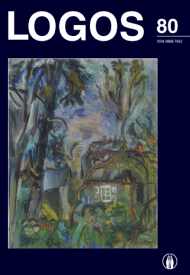Dailės Kūrinio Meninio Vaizdo Samprata: Apibrėžtys Ir Suvokimo Kaita
The Concept of Creations’ Artistic Image: Definitions and Development of Perception
Author(s): Raimonda SimanaitienėSubject(s): Visual Arts, Aesthetics, Philosophy of Mind, Cognitive Psychology
Published by: Visuomeninė organizacija »LOGOS«
Keywords: analysis; aspect; art; esthetic; work; material; artistic image; concept; perception;
Summary/Abstract: The category of artistic image, which reveals the essence of art works, is interpreted by scientists in a broad manner. This concept’s etiology is derived from Antiquity - Plato’s and Aristotle’s followers. Later it was extended by Hegel’s followers. Representatives of aesthetic philosophy define the artistic image as a specific interpretation of reality and a form of expression of the artist’s thoughts and feelings. In artistic terminology, the artistic image is defined as an aesthetic category, which summarizes the rendering of reality in the art work. It is also proposed that the artistic image, born in the act of creation, is rendered with the means of artistic expression. In every sphere of creation the artistic image has its own structure. On one hand, it is determined by the idea or contextual peculiarities, on the other hand , it is determined by the characteristics of the material plasticity of the work. The artistic image arises from the work as a tangible thing, but at the same time it is not the same as the work. The artistic image is of conventional nature. It has an autonomous structure, which is independent from visual reality, though the visual reality is exactly the property in which the expression of artistic image is found. The goal of this article is to analyze the specifics and concept of artistic image, the development of the perception of this category, and any gnoseological and axiological peculiarities.
Journal: LOGOS - A Journal of Religion, Philosophy, Comparative Cultural Studies and Art
- Issue Year: 2014
- Issue No: 80
- Page Range: 105-111
- Page Count: 7
- Language: Lithuanian

